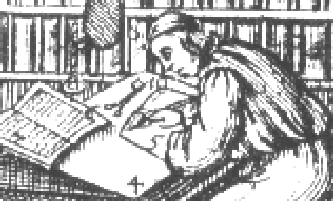 |
Text Encoding Initiative |
The XML Version of the TEI Guidelines<hand> |
| <hand> | used in the header to define each distinct scribe or handwriting style. | |||||||||||||||||||||||||||||||||||||||||||||||||||||||||||||||||||||||||||||||||||||||||||||||||||||||||||||||
| Attributes |
(In addition to global attributes)
|
|||||||||||||||||||||||||||||||||||||||||||||||||||||||||||||||||||||||||||||||||||||||||||||||||||||||||||||||
| Example |
|
|||||||||||||||||||||||||||||||||||||||||||||||||||||||||||||||||||||||||||||||||||||||||||||||||||||||||||||||
| Note |
The global id attribute is required on this element, and supplies an identifier, either numeric or alphanumeric, used thereafter in the document to refer to this scribe or handwriting style. The <hand> element is used in the header to define each unique hand, including unique scribes, distinguished by the encoder in the document. One such element must appear within the header for each hand distinguished in the text. Each location where a change of hands occurs is marked in the text by the <handShift> milestone element. |
|||||||||||||||||||||||||||||||||||||||||||||||||||||||||||||||||||||||||||||||||||||||||||||||||||||||||||||||
| Module | Declared in file teitran2; Additional tag set for Physical Transcription: enabled by TEI.transcr | |||||||||||||||||||||||||||||||||||||||||||||||||||||||||||||||||||||||||||||||||||||||||||||||||||||||||||||||
| Data Description | Empty. | |||||||||||||||||||||||||||||||||||||||||||||||||||||||||||||||||||||||||||||||||||||||||||||||||||||||||||||||
| May occur within | handList | |||||||||||||||||||||||||||||||||||||||||||||||||||||||||||||||||||||||||||||||||||||||||||||||||||||||||||||||
| Declaration |
<!ELEMENT hand %om.RO; EMPTY>
<!ATTLIST hand
%a.global;
hand CDATA #IMPLIED
scribe CDATA #IMPLIED
style CDATA #IMPLIED
mainLang CDATA #IMPLIED
ink CDATA #IMPLIED
character CDATA #IMPLIED
first CDATA #IMPLIED
resp CDATA %INHERITED;>
|
|||||||||||||||||||||||||||||||||||||||||||||||||||||||||||||||||||||||||||||||||||||||||||||||||||||||||||||||
| See further | 18.2.1 Document Hands | |||||||||||||||||||||||||||||||||||||||||||||||||||||||||||||||||||||||||||||||||||||||||||||||||||||||||||||||
Up: 35 Elements